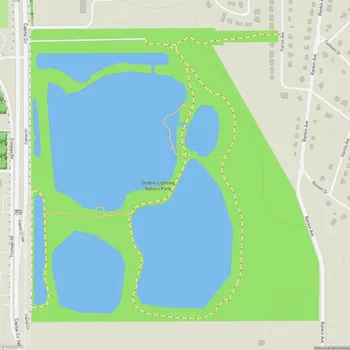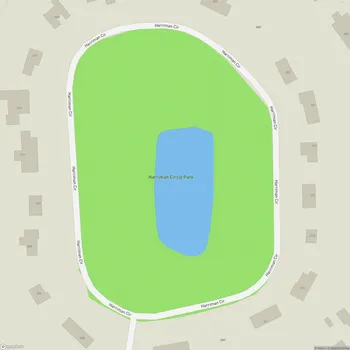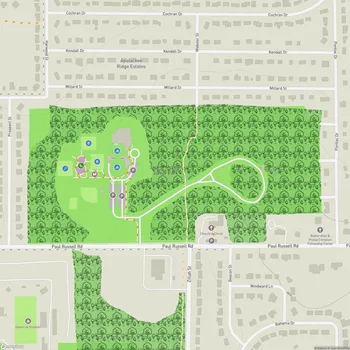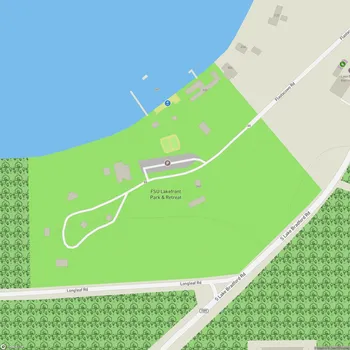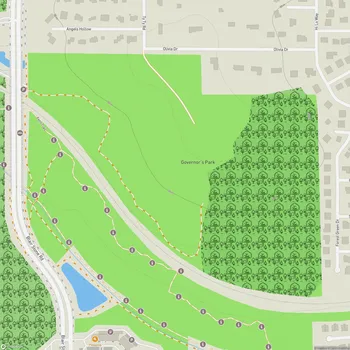Leon Sinks Geological Area
Interactive Park Map
About Leon Sinks Geological Area
A Hidden Geological Wonder
Positioned in the Apalachicola National Forest just south of Tallahassee lies a fascinating natural playground where earth quite literally opens up beneath your feet. Leon Sinks Geological Area showcases the region's distinctive karst topography - essentially limestone bedrock that's been slowly dissolved by water over countless years, creating a landscape that feels almost otherworldly.
The crown jewel here is Big Dismal Sink, the largest and deepest sinkhole you'll encounter during your visit. It's an impressive sight that tends to leave most visitors in awe. As you explore, you'll also come across a disappearing stream (yes, water that literally vanishes underground) and a natural bridge among the numerous wet and dry sinkholes scattered throughout the property.
Some of the wet sinkholes display strikingly beautiful aquamarine blue water that creates a stunning contrast against the lush greenery surrounding them. And don't miss Black Sink - its dramatic view is definitely worth seeking out during your adventure here.
Trails to Explore
The park offers about 5-6 miles of well-maintained, clearly marked trails that guide you through sinkholes of various sizes and depths. The full loop takes you through multiple ecosystems with some moderate ups and downs and the occasional root-covered section to keep things interesting.
Short on time? No problem. You can reach the intriguing Gopher Hole cave just 0.2 miles from the trailhead, and the beautiful blue waters of Hammock Sink are accessible within a half-mile walk. If you're looking for the most impressive geological features, head to the northern Sinkhole Trail - it's particularly well-maintained and won't disappoint.
You'll find educational signs along the way explaining how these sinkholes formed and details about the local ecology. And when your legs need a break, there are benches placed at strategic spots excellent for sitting back and soaking in the unique scenery.
The Hidden Underwater World
What you see at Leon Sinks is literally just the surface of something much bigger. The area is part of an extensive underwater cave system connecting to Wakulla Springs, forming one of the largest known underwater cave networks in the world. While cave diving isn't allowed (for good reason - safety first!), the surface features alone provide plenty to marvel at.
If you venture to Gopher Cave, keep an eye out for rare white crayfish that have adapted to life in this unusual environment. These peculiar creatures are just one example of the specialized wildlife calling the underground portions of this karst system home.
Nature's Diversity
The trails wind through an impressive mix of longleaf pine forests, beech-magnolia forests, and cypress swamps. You'll see excellent examples of fire-adapted ecosystems, particularly centered around the resilient longleaf pine.
As for wildlife, keep your eyes peeled for gopher tortoises, white-tailed deer, various birds, and (if you're really lucky) perhaps even a black bear. Each season brings different wildlife viewing opportunities, making this a place worth revisiting during the year.
Before You Go
You'll discover clean restrooms with running water near the parking area, and several picnic tables near the trailhead offer a nice spot to enjoy a snack before or after your hike.
Dogs are welcome as long as they're leashed. Do bring water bottles and insect repellent - the ticks can be particularly bothersome during certain seasons. And don't forget $5 in cash for the daily parking fee.
